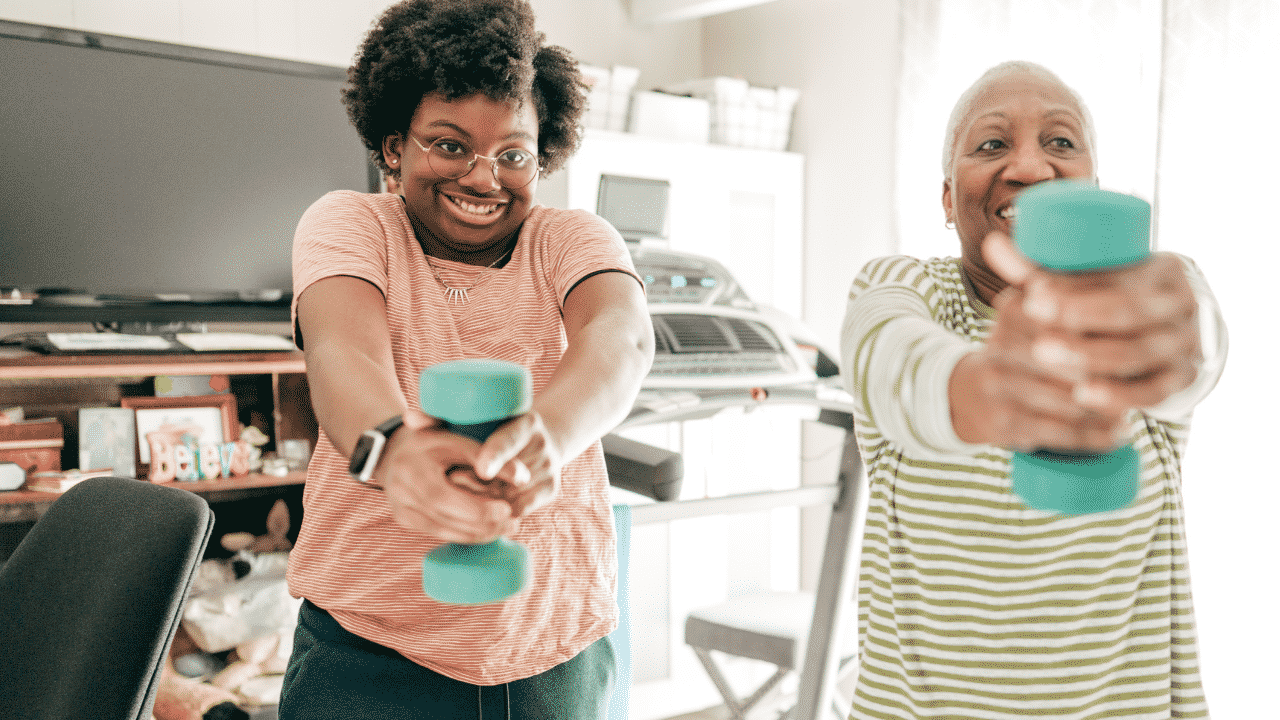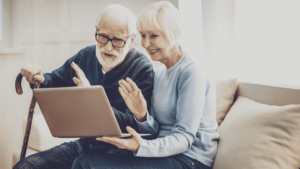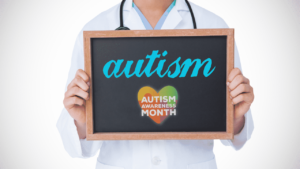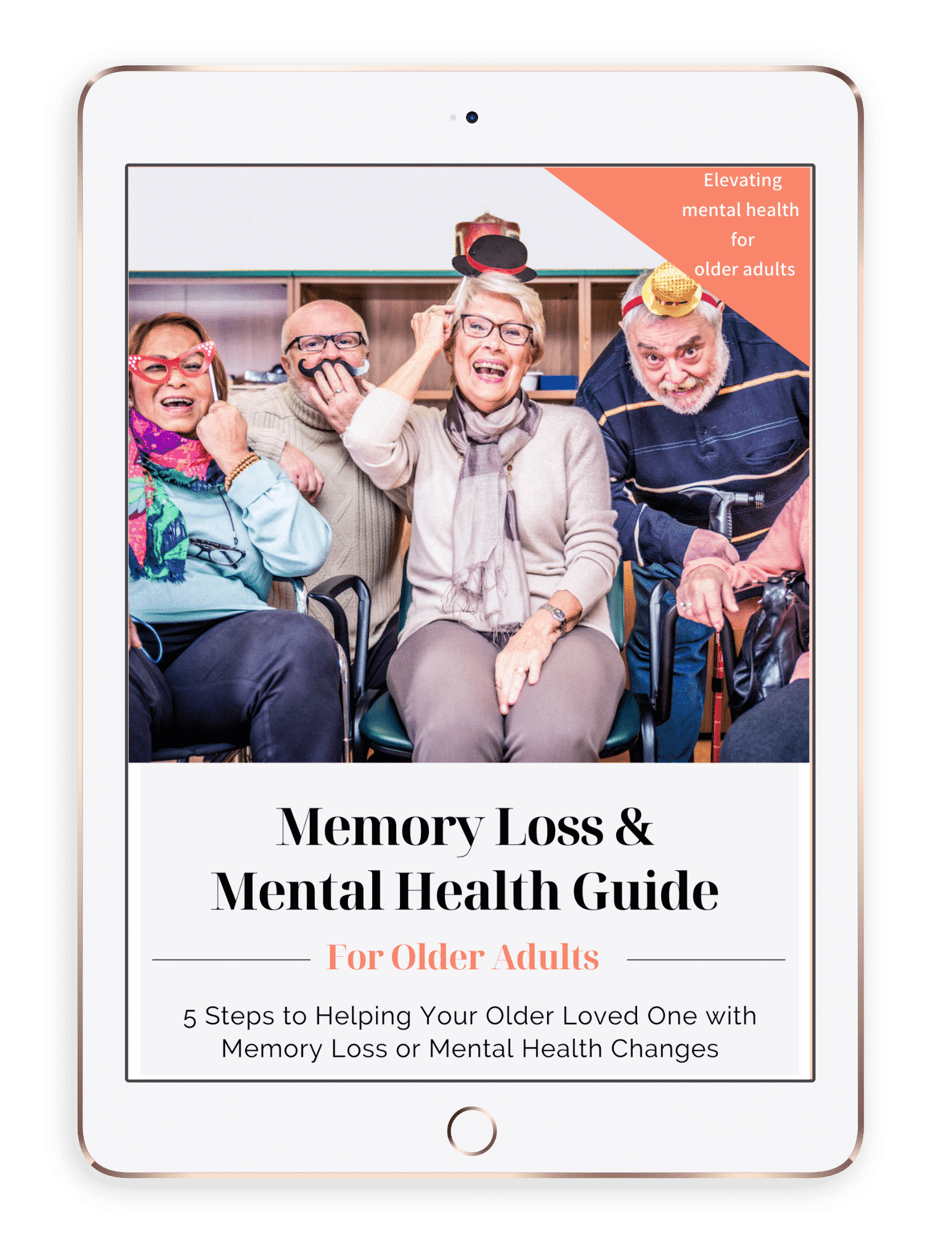According to a study by the CDC, chronic pain impacts over 16,386,000 older adults age 65-84 and an additional 2,596,000 MORE adults over the age of 85 (Dahlhamer et al, 2018). If you read my post about chronic pain in older adults, you also know that chronic pain can have a negative impact on older adults’ activities, social life, sense of self, and mood.
In this post, I’m going to focus on 5 tips for helping your loved one cope with their pain.
1. Let them be independent!
Even though it is tempting to try to say “oh don’t worry about that, I don’t want you to hurt yourself”, or “sit down, I’ve got this”, try not too unless your loved one is trying to do a task that the doctor has prohibited or that poses a serious fall risk. It is completely normal to want to help out and take on responsibility for chores around the house or yard in order to spare your loved one pain; however, this can accidentally also lead to feelings of uselessness, depression, or “being a burden”.
Instead of jumping in and taking over tasks, have a conversation with your loved one and ask them what things they still want to do, and if there are other tasks, they would welcome your help with (they may or may not). This way, they get the help they may need or want while keeping some independence and sense of capability. You can always re-evaluate and renegotiate who completes these tasks if your loved ones’ health situation worsens or changes.
2. Help them find new ways to do old things.
While we are on the subject of maintaining responsibilities and continuing to do engage in life, let’s talk about finding new ways to get the job done. Perhaps bending over to pull a large stock pot out of a lower cabinet is seriously painful, but your loved one loves to cook; maybe you can suggest that they keep their most frequently used pots on the countertop instead, so they are more easily accessible.
Keep in mind that this strategy isn’t just for chores, it can be used to maintain deeper more meaningful activities too. For example, maybe your loved one is missing out on having fun with grandkids because they “can’t keep up”; help them brainstorm different ways for them to spend time with the grandchildren that are not as physically demanding. If the grandkids are playing outside in the sprinkler, see if your loved one would want to sit outside and shoot a water gun at the kids. Get creative!
3. Help keep them moving!
Maintaining engagement in activities isn’t just important for your loved one’s sense of independence or meaning, it’s also an important part of managing the pain itself. Our bodies are designed to move. When we are less active, such as when start opting out of activities in order to avoid or prevent pain, it does not take long for our muscles to start to become weaker (atrophy). When the muscles become weaker in a process that is sometimes called “deconditioning syndrome” or “disuse syndrome”, it becomes harder to move or bones and joints because the muscles are no longer doing their part to help support the movement. This means that even small tasks that did not used to be painful (like walking across the room, or getting up from a chair), end up becoming painful as a result of lack of movement.
Pro Tip: Check with your loved one’s physician and then, with physician approval, encourage your loved one to stand up or walk a little every hour to avoid deconditioning.
4. Encourage them to maintain social connections.
Human beings are social creatures by nature. Most of us want to feel connected to others. Yet, because chronic pain can lead to changes in mobility, sometimes it can also lead to people opting out (or at times being forced out) of social activities they once enjoyed. Talk to your loved one and see if there are social circles or specific people that they miss (if they’ve already pulled away) or that they want to make sure they maintain (if they are starting to talk about skipping out if a social function). Help your loved one brainstorm another way to engage with these people. Could they talk on the phone? Could they Zoom? Could they come for a visit in your loved one’s home instead?
Alternatively, you could consider helping your loved one to plan ahead for recovery days after the social outing. Some people think “if I’m going to do it, I’m going to do it right”, or in other words, they don’t want to find an alternative way to see their friends, they want to do it the way they’re used to doing it or not at all. If this is the case with your loved one, you can try to encourage them to go to the gathering/event/meeting anyway, but to make a strategic plan for recovery over the next few days that follow. Will need to make sure that someone is available to help during the recovery period? Will they need to stock up on meals that are easy to pop in the microwave? Will they have ice packs or heating pads ready to go? Prepare whatever they need to recover. *A word to the wise, this is sometimes tricky to do. Your loved one needs to be fully on board and want to go to the event with a full recognition and understanding that they may hurt worse afterward and that it was their choice to go.
5. Don’t assume pain “no big deal” or “just part of getting old”.
Last but certainly not least, do not assume that the pain is just part of getting old and that because of this your loved one should “get over it”. Pain can be extremely physically and mentally exhausting. Even the most resilient person may have days where they yearn to be pain-free again or to run like they did when they were younger. Telling someone that pain is just part of life or part of the aging process can be incredibly invalidating and hurtful; it can make your loved one feel as if they or their feelings don’t matter anymore. Feelings of hurt and unimportance can quickly lead to depression. So instead of acting as if the pain is less of a big deal, try talking to your loved one about how they feel the pain is impacting them, and if you notice any signs of depression or loss consider whether a referral to a therapist might be helpful. Find a therapist here.
References
Dahlhamer J, Lucas J, Zelaya, C, et al (2018). Prevalence of Chronic Pain and High-Impact Chronic Pain Among Adults — United States, 2016. MMWR Morbity & Mortality Weekly Report. 67:1001–1006. DOI: http://dx.doi.org/10.15585/mmwr.mm6736a2external icon




